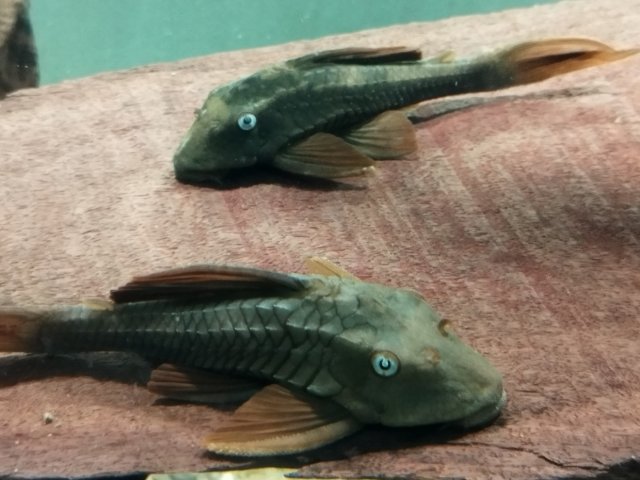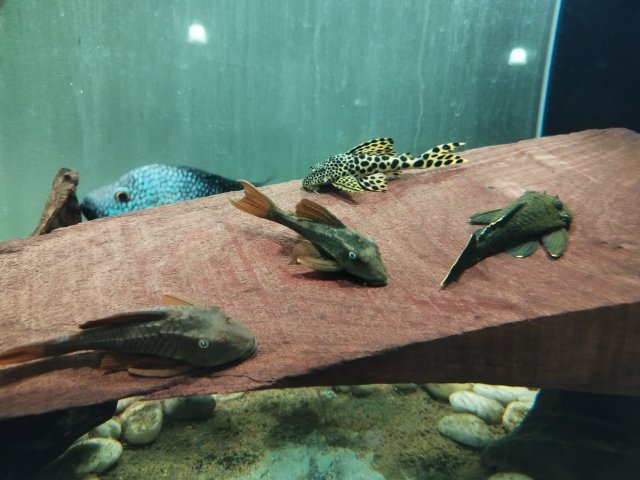A got an L137 a couple of weeks ago. Nice colour, about five inches, and quite outgoing.
But unlike any other L number I have had, it is a really messy eater, especially with wood. I have got two pieces of wood in this tank, one is teak, and the other is good dense asian hardwood.
Each morning I look, and there is an increasing layer of sawdust on the substrate. Being dense wood, it does not get swept over the overflow. There is one deadspot in the tank, and the sawdust gets thickest there. What a mess?
What is it going to be like when he is eight inches? Or ten inches?
Most of my other L numbers are carnivorous, and really keep the tank clean.
Anyone else had any really messy L numbers? Which ones, and what did you do?
But unlike any other L number I have had, it is a really messy eater, especially with wood. I have got two pieces of wood in this tank, one is teak, and the other is good dense asian hardwood.
Each morning I look, and there is an increasing layer of sawdust on the substrate. Being dense wood, it does not get swept over the overflow. There is one deadspot in the tank, and the sawdust gets thickest there. What a mess?
What is it going to be like when he is eight inches? Or ten inches?
Most of my other L numbers are carnivorous, and really keep the tank clean.
Anyone else had any really messy L numbers? Which ones, and what did you do?







